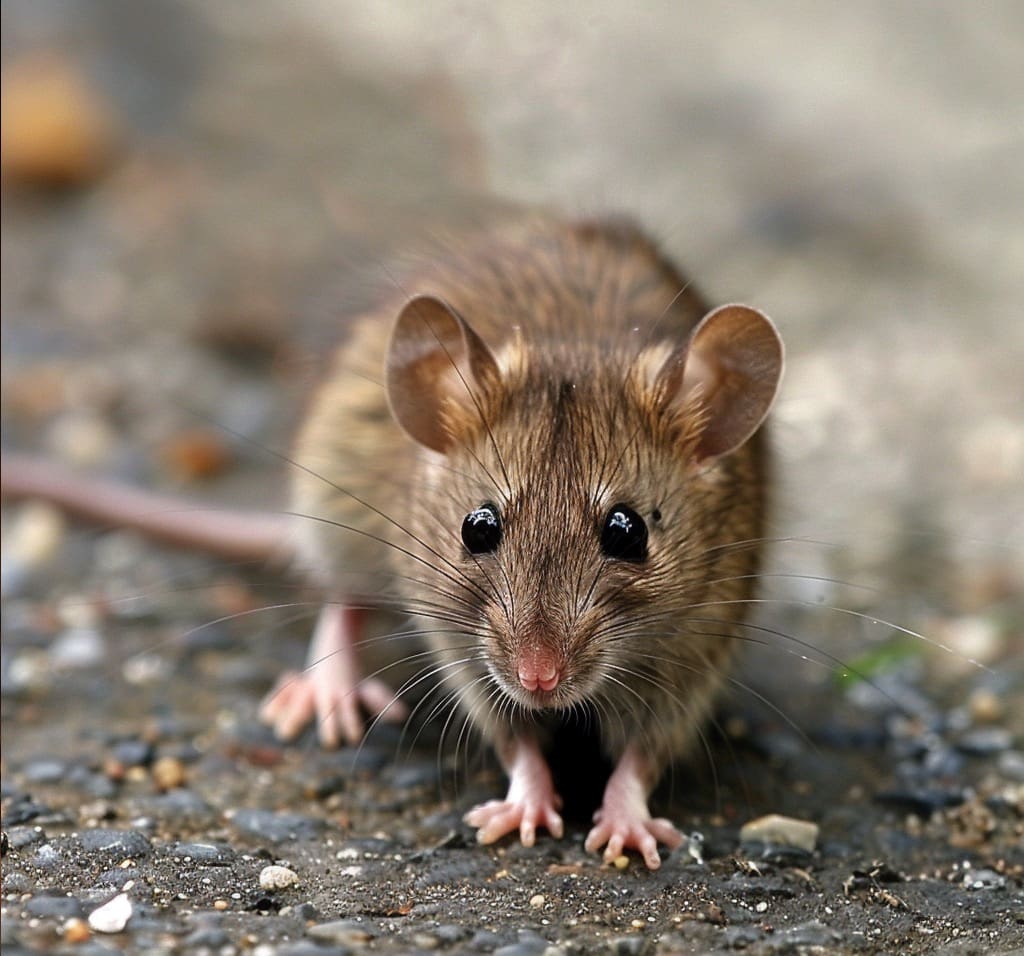
Are you tired of pesky insects and rodents invading your home? We've all been there, searching for the most effective and hassle-free solution to keep these unwanted guests at bay. Ultrasonic pest control devices have gained popularity as a seemingly magical fix, promising to repel pests with high-frequency sound waves inaudible to humans.
But do these devices really work, or are they just another gimmick draining your wallet? We'll dive into the world of ultrasonic pest control, exploring its effectiveness and value for money. As homeowners and pest control enthusiasts, we've researched and tested various methods to bring you the most up-to-date information on this controversial topic.
What Are Ultrasonic Pest Control Devices?
Ultrasonic pest control devices are electronic gadgets designed to repel pests using high-frequency sound waves. These devices emit sounds above the hearing range of humans but are supposedly detectable and disturbing to various pests.
How They Are Designed to Work
Ultrasonic pest repellers operate on a simple principle: emitting high-frequency sound waves. These devices typically produce sounds between 20,000 and 65,000 Hz, well above the human hearing threshold of about 20 Hz to 20,000 Hz. The theory behind their functionality is that these high-frequency sounds are irritating or painful to pests, causing them to avoid areas where the devices are installed.
Manufacturers claim these devices:
- Disrupt pests' nervous systems
- Interfere with pests' communication
- Create an inhospitable environment for pests
Most ultrasonic repellers are designed to be plugged into electrical outlets and cover a specific area, often a single room or small section of a house. Some models come with adjustable frequency settings, purportedly to target different types of pests.
The Science Behind Ultrasonic Pest Repellers
Ultrasonic pest repellers operate on the principle of emitting high-frequency sound waves that are inaudible to humans but supposedly disruptive to pests. These devices aim to create an uncomfortable environment for pests, forcing them to leave the area.
Effects of Ultrasonic Waves on Pests
Ultrasonic waves affect pests in several ways:
- Disorientation: High-frequency sounds disorient pests, disrupting their normal behavior patterns.
- Communication interference: Ultrasonic waves can interfere with pest communication, making it difficult for them to locate food sources or mates.
- Stress induction: Continuous exposure to ultrasonic frequencies causes stress in pests, potentially driving them away.
- Sensory overload: Some pests experience sensory overload from ultrasonic waves, leading to avoidance behaviors.
Research shows that different pest species react differently to ultrasonic frequencies. Rodents, for example, are more sensitive to frequencies between 20-50 kHz, while certain insects respond to higher ranges.
| Pest Type | Effective Frequency Range |
|---|---|
| Rodents | 20-50 kHz |
| Insects | 30-100 kHz |
| Bats | 20-80 kHz |
It's important to note that the effectiveness of ultrasonic waves on pests is still debated in the scientific community, with mixed results from various studies.
Are Ultrasonic Pest Repellers Effective?
Ultrasonic pest repellers' effectiveness remains a subject of debate among researchers and pest control professionals. We've examined scientific studies and expert opinions to provide a comprehensive overview of their efficacy.
What Scientific Studies Say
Scientific studies on ultrasonic pest repellers have yielded mixed results. A 2015 review published in the Journal of Economic Entomology found limited evidence supporting their effectiveness against various insect pests. Another study in the International Journal of Environmental Health Research (2007) reported no significant reduction in cockroach activity when using ultrasonic devices. However, a 2011 study in the Journal of Vector Ecology showed some success in repelling mosquitoes using specific ultrasonic frequencies.
| Study Year | Journal | Pest Type | Effectiveness |
|---|---|---|---|
| 2015 | Journal of Economic Entomology | Various insects | Limited |
| 2007 | International Journal of Environmental Health Research | Cockroaches | No significant effect |
| 2011 | Journal of Vector Ecology | Mosquitoes | Some success |
Expert Opinions on Effectiveness
Pest control experts generally express skepticism about the long-term effectiveness of ultrasonic repellers. The National Pest Management Association (NPMA) states that while these devices may cause initial disorientation in some pests, their efficacy diminishes over time as pests become accustomed to the sound. Entomologists from leading universities, such as Dr. Michael Potter from the University of Kentucky, emphasize the lack of consistent scientific evidence supporting ultrasonic repellers' claims. Many experts recommend integrated pest management approaches, combining multiple methods for more reliable pest control.
Factors Affecting Ultrasonic Pest Control
The effectiveness of ultrasonic pest control devices depends on several key factors. We'll examine two crucial aspects that influence the performance of these devices: the types of pests targeted and environmental considerations.
Types of Pests Targeted
Ultrasonic pest control devices aren't equally effective against all pests. Different species respond to varying frequency ranges:
- Rodents: Sensitive to frequencies between 20-50 kHz
- Insects: Typically respond to 30-100 kHz
- Cockroaches: Most sensitive to 40-80 kHz
- Mosquitoes: Affected by frequencies around 38-44 kHz
- Spiders: Limited response to ultrasonic frequencies
The effectiveness of these devices varies significantly depending on the target pest. For example, studies show that rodents might initially react to ultrasonic sounds but often become habituated over time. Insects like cockroaches may show more consistent aversion to certain frequencies.
Environmental Considerations
The environment in which ultrasonic pest control devices operate plays a crucial role in their effectiveness:
- Sound barriers: Solid objects (furniture, walls) block ultrasonic waves
- Room size: Larger spaces reduce the intensity of ultrasonic waves
- Humidity: High humidity can absorb ultrasonic frequencies
- Background noise: Competing sounds may interfere with device effectiveness
- Device placement: Improper positioning reduces coverage and effectiveness
Ultrasonic waves don't penetrate walls or solid objects, limiting their range to line-of-sight areas. In a typical home environment, this means multiple devices are often necessary for comprehensive coverage. High humidity levels can absorb ultrasonic frequencies, potentially reducing their effectiveness in damp areas like basements or bathrooms.
Safety and Potential Risks
Ultrasonic pest control devices are generally considered safe for humans, but they're not without potential risks. We'll examine the impact on humans and the effects on pets and other animals to provide a comprehensive overview of safety concerns.
Impact on Humans
Ultrasonic devices operate at frequencies above the human auditory range, typically between 20-65 kHz. Most people can't hear these high-frequency sounds, making them seemingly harmless. However, some individuals may experience:
- Headaches
- Dizziness
- Nausea
- Tinnitus (ringing in the ears)
These symptoms are rare and often short-lived. Manufacturers design ultrasonic pest repellers to comply with safety standards, limiting their potential harm to humans. It's important to note that long-term exposure effects aren't fully understood, as research in this area is limited.
Effects on Pets and Other Animals
Pets and non-target animals can be more sensitive to ultrasonic frequencies than humans. The impact varies depending on the species:
- Dogs: Can hear frequencies up to 45 kHz
- Cats: Detect sounds up to 64 kHz
- Rodents: Sensitive to 20-50 kHz range
- Birds: Hearing range varies by species
Potential effects on pets include:
- Discomfort or distress
- Behavioral changes
- Disorientation
- Loss of appetite
Wildlife and beneficial insects may also be affected, potentially disrupting local ecosystems. It's crucial to consider the impact on all animals in the vicinity when using ultrasonic pest control devices.
To minimize risks:
- Place devices away from areas frequented by pets
- Monitor pet behavior after installation
- Consult with a veterinarian if concerns arise
- Consider alternative pest control methods in sensitive environments
By understanding these safety considerations, we can make informed decisions about using ultrasonic pest control devices while prioritizing the well-being of humans, pets, and local wildlife.
Cost-Effectiveness of Ultrasonic Pest Control
Initial Investment
Ultrasonic pest control devices typically cost $20 to $100, depending on the brand and coverage area. High-end models with advanced features can reach $200 or more. This initial investment is often lower than professional pest control services, which average $300 to $550 per treatment.
Long-Term Savings
Ultrasonic devices don't require ongoing purchases of chemicals or traps, potentially leading to long-term savings. Traditional pest control methods often involve recurring costs for bait, traps, or professional services, which can add up to $1,000 or more annually for severe infestations.
Energy Consumption
Most ultrasonic pest repellers consume minimal electricity, typically 2-5 watts per device. At an average electricity rate of $0.14 per kWh, the annual operating cost is approximately $1-$3 per device. This low energy consumption contributes to the overall cost-effectiveness of these devices.
Effectiveness vs. Cost
The cost-effectiveness of ultrasonic pest control hinges on its efficacy. While some users report success, scientific studies show mixed results. A 2015 study published in the Journal of Economic Entomology found that ultrasonic devices had little to no effect on German cockroaches, raising questions about their value for money in certain pest control scenarios.
| Method | Initial Cost | Annual Operating Cost | Effectiveness |
|---|---|---|---|
| Ultrasonic | $20-$100 | $1-$3 | Mixed results |
| Chemical | $50-$200 | $200-$500 | Generally effective |
| Professional | $300-$550 | $600-$1,000 | Highly effective |
Traditional chemical treatments and professional services often provide more reliable results but at a higher cost. Ultrasonic devices offer a lower-cost alternative, but their inconsistent effectiveness may lead to additional expenses if supplementary pest control measures become necessary.
Alternatives to Ultrasonic Pest Repellers
Traditional Chemical Treatments
Chemical treatments remain a popular alternative to ultrasonic pest repellers. These methods include:
- Insecticides: Sprays, baits, and powders target specific pests
- Rodenticides: Poisonous baits designed for rodent control
- Fumigation: Whole-house treatment for severe infestations
Chemical treatments often provide immediate results but require careful handling and may pose health risks to humans and pets.
Natural Pest Control Methods
For those seeking eco-friendly options, natural pest control methods offer effective alternatives:
- Diatomaceous earth: Dehydrates insects on contact
- Essential oils: Repel pests with strong scents (e.g., peppermint, citronella)
- Vinegar solutions: Deter ants and other insects
- Neem oil: Acts as a natural insecticide and repellent
These methods are generally safe for humans and pets but may require more frequent application.
Physical Barriers and Traps
Physical pest control methods provide tangible solutions without chemicals:
- Sealed containers: Store food in airtight containers
- Weather stripping: Block entry points around doors and windows
- Mesh screens: Cover vents and openings to prevent pest entry
- Sticky traps: Capture crawling insects
- Snap traps: Effective for rodent control
These methods are often cost-effective and environmentally friendly but may require more manual effort.
Professional Pest Control Services
For severe or persistent infestations, professional pest control offers comprehensive solutions:
- Customized treatment plans
- Access to commercial-grade products
- Expertise in identifying and targeting specific pests
- Regular inspections and follow-up treatments
While potentially more expensive, professional services often provide long-term, effective pest management.
Integrated Pest Management (IPM)
IPM combines multiple pest control strategies for optimal results:
- Identification of pest species
- Monitoring pest populations
- Preventive measures (e.g., sanitation, habitat modification)
- Combination of chemical and non-chemical control methods
- Regular evaluation and adjustment of strategies
This approach offers a balanced, long-term solution to pest problems while minimizing environmental impact.
Choosing the Right Pest Control Method
Selecting an effective pest control method depends on various factors. We'll explore key considerations to help you make an informed decision:
Identify the Pest Problem
Accurate pest identification is crucial for effective control:
- Conduct thorough inspections to determine pest species
- Assess infestation severity and extent
- Consider seasonal patterns and pest life cycles
Evaluate Environmental Impact
Environmentally friendly pest control options:
- Natural repellents (essential oils, diatomaceous earth)
- Biological controls (predatory insects, nematodes)
- Physical barriers and traps
Consider Safety Concerns
Prioritize safety for humans, pets, and non-target organisms:
- Choose low-toxicity or non-toxic methods when possible
- Follow proper application and storage guidelines
- Consider potential risks to children and pets
Assess Long-Term Effectiveness
Compare long-term efficacy of different methods:
- Ultrasonic devices: Limited scientific evidence of long-term effectiveness
- Chemical treatments: Can provide immediate results but may require repeated applications
- IPM strategies: Often offer sustainable, long-term pest management
Evaluate Cost-Effectiveness
Compare initial and ongoing costs:
| Method | Initial Cost | Ongoing Cost | Effectiveness |
|---|---|---|---|
| Ultrasonic | $20-$100 | Low | Variable |
| Chemical | $50-$200 | Moderate | High |
| IPM | $100-$500 | Moderate | High |
| Natural | $20-$100 | Low | Moderate |
Consider Professional Expertise
Benefits of professional pest control services:
- Access to specialized knowledge and equipment
- Customized treatment plans
- Guaranteed results and follow-up services
By carefully evaluating these factors, you'll be better equipped to choose a pest control method that's effective, safe, and suitable for your specific situation.
Romex Safe, Effective, and Reliable Pest Control Services
At Romex Pest Control, we're committed to providing safe, effective, and reliable pest control solutions. Our team of certified professionals uses advanced techniques and eco-friendly products to tackle various pest problems. We understand that each infestation is unique, so we tailor our approach to meet your specific needs.
Comprehensive Pest Management
We offer a wide range of services to address different types of pests:
- Insect control (ants, roaches, bed bugs)
- Rodent elimination (mice, rats)
- Termite treatment and prevention
Our comprehensive approach ensures we target the root cause of infestations, not just the symptoms.
Environmentally Friendly Solutions
We prioritize the use of eco-friendly pest control methods:
- Integrated Pest Management (IPM) techniques
- Low-toxicity products
- Targeted application to minimize environmental impact
These practices effectively control pests while protecting your family, pets, and the environment.
Customized Treatment Plans
We create personalized treatment plans based on:
- Property type and size
- Pest species and infestation level
- Your specific concerns and preferences
This tailored approach maximizes effectiveness and ensures long-lasting results.
Experienced and Certified Technicians
Our team consists of highly trained professionals:
- State-certified pest control operators
- Ongoing education and training
- Years of experience in the field
You can trust our experts to handle your pest problems efficiently and safely.
Guaranteed Results
We stand behind our services with a satisfaction guarantee:
- Follow-up inspections
- Re-treatments if necessary
- Continuous support and advice
Our goal is to provide you with peace of mind and a pest-free environment.
Key Takeaways
While ultrasonic pest control devices offer a tempting solution they may not be the most effective option for all pest problems. For reliable and long-lasting results we recommend professional pest control services like Romex Pest Control. Their comprehensive approach customized treatments and experienced technicians ensure a pest-free environment tailored to your specific needs. By choosing a professional service you'll get peace of mind knowing that your pest issues are being handled safely and effectively.
We hope you enjoy these informational articles. If you'd like to learn more about our eco-friendly pest control services, call (844) 955-2447.
Read More
Your Path to a Pest-Free Home or Business
Romex Pest Control is dedicated to keeping you, your children, and your pets safe. We offer an eco-friendly, child-friendly, and pet-friendly pest control solution that is guaranteed.
We are confident in solving all pest, rodent, and termite problems.
Romex Pest Control is fully insured and licensed in Texas, Oklahoma, Louisiana, and Mississippi.
Hours
M-F 8 am–5 pm
Sat 8 am–2 pm
Sun Closed
Established 2016 © Copyright 2025 Romex Pest Control










